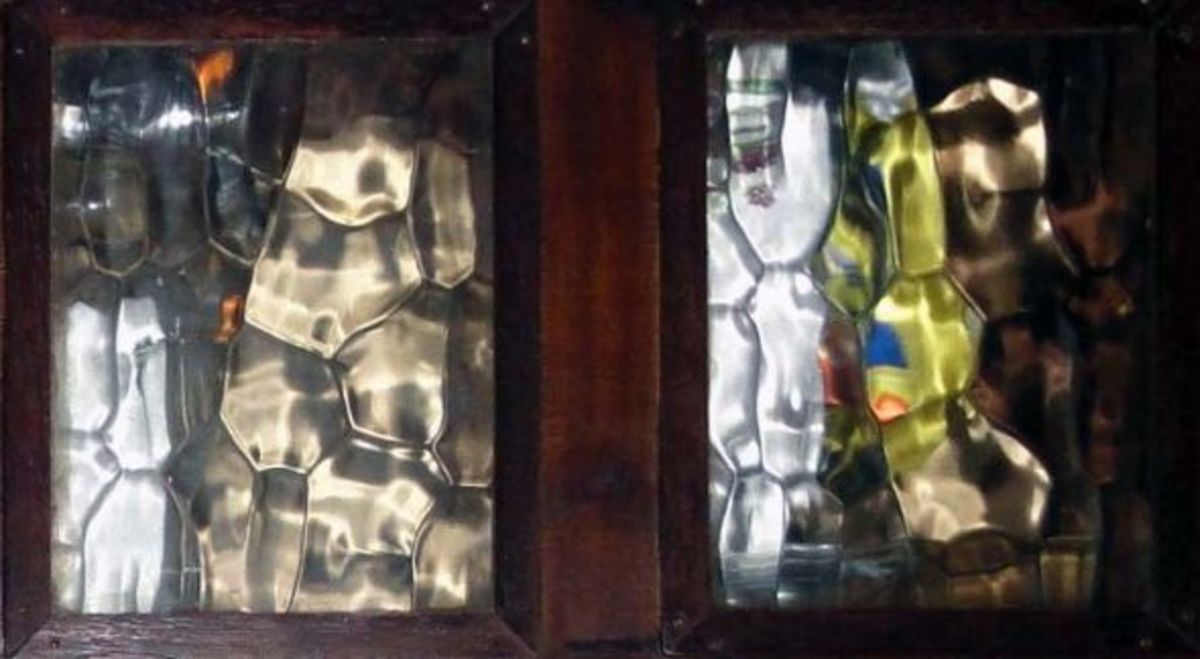The Evolution of Glass Windows, and the Synchronization of Aircraft Weapons



Two of mankind's inventions that have always puzzled many
I wonder who it was who sat upon a sunlit, sandy beach somewhere and mused, "You know, I'm going to melt this lot down and make transparent walls out of it...why, I might call the stuff windows!"
Of course, glass, or a near relative, volcanic obsidian, was made first by Mama Nature in the kiln of great volcanoes, as the magma rushed to the surface and began building the world as we would one day know it, some billions of years later.
And even modern glass dates back 3,500 years to Mesopotamia, becoming Greece; and to Iraq/Kuwait. I'm afraid the chappie on that sandy beach will never be named. But soon glass was being used in China; by the Romans and then spread throughout Anglo Saxon Europe. It began with decorative and/or useful items like, well, drinking glasses of course.
And nowhere is better illustrated showing the great beauty of glass windows that in the centuries-old stained glass in our great churches and cathedrals. Once broken and damaged, it's color and ancient light can never be quite produced again by modern restorers, even using the best of modern science and dyes.
Mankind must have had to experiment for years to hit upon the right combination of silica, soda, ash and limestone that nature had stumbled upon to make glass, a formula which has survived thousands of years, only being added to by the dyes which produced the huge range of colors we see up to today.
Of course, it's those same great thinkers in history who have brought man to where he is in 2017...well, better not go there!
But...take aircraft ordinance. Who was it that first said. "Heck, don't load the wings with all that weight, let's synchronize the machine guns to fire THROUGH the propeller," turning at a thousand revs a second, or whatever. That has always seemed a miracle to me, how that stream of bullets didn't shred the prop into splinters. A bit of research brought little reassurance!
In fact, the plane's own guns often did strike the propeller, damaging it if not actually shredding it.
But the synchronisation of nose guns, vis a vis a spinning prop obsessed many fine engineering brains from the first world war until the last of this type of weapon was used - by Russian Yak aircraft in the Korean war.
Literally dozens of systems were produced, both mechanical and electrical. One early application even included the pilot who had to adjust his throttle and engine revolutions through a narrow range before employing his machine guns - often two in number. As this expertise was usually needed at the very worst time, during a "dog-fight," we can only imagine the poor stressed pilot trying to fire upon the enemy without blowing his own prop off at the same time!
All the major "war games" players were producing their own, highly complicated, systems: Britain, Germany, France, Russia and the USA.
The synchronization system was never popular by pilots for obvious reasons. Too much could go wrong and the contrivances were never fool-proof. Many pilots returned during WW! with colander-like propellers...and there are no stats. for those who blew the whole propeller off and ditched in mountains, or the sea.
As aircraft weaponry became heavier due to faster, better protected enemy craft, heavy wing-mounted guns became the norm - easier to install on the newer, stiff - winged monoplane fighters of the latter part of WW. Then the arrival of the jet fighters did away with the need of synchronized guns altogether.
Do you, readers, have any invention that tickles your curiosity? Well, tell me and I would be happy to research your pet head-scratcher...or simply switch on the laptop and do an article yourself...more the merrier on Hub Pages they tell us.











